What Is the Categories of the Blue Jay
Whether you think they're brilliant or bullies, there's plenty to discover about these clever corvids. Learn about blue jays and other common jay species.
Jays are the loudest and flashiest of the corvidae family, which also includes crows, ravens, and magpies. They're also considered to be among the most intelligent species of the bird world. Most jays have strong bills and feed on all sorts of food, but these birds especially love peanuts. At least 10 types of jays live in North America.
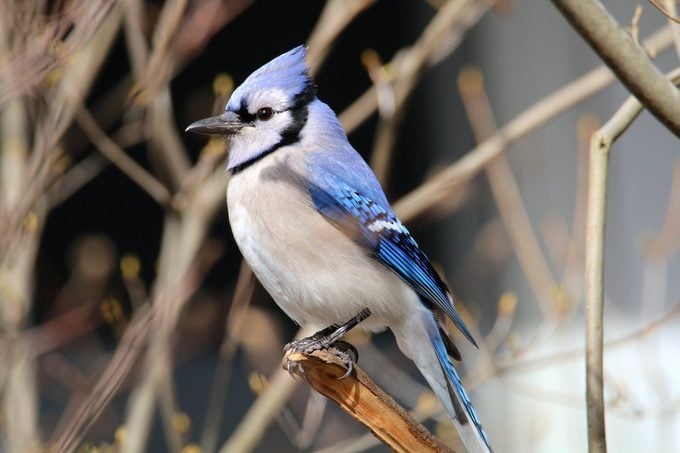
Types of Jays: Blue Jay
Chances are good you've seen this type of jay the most. Though a rare visitor west of the Rocky Mountains, blue jays live throughout the Midwest and East. The bird is hard to miss thanks to its bright blue markings and a loud jayyy jayyy call. Telltale signs that you're seeing a blue jay are white wing-bars and a jaunty crest of feathers. This bird doesn't need much coaxing to visit and will stop by most seed or suet feeders. But what blue jays love to eat are plenty of peanuts, acorns and beechnuts, which may help attract a yard full of jays. Some people see these birds as bullies. If you prefer to discourage their visits, hang feeders with foods jays don't eat, like nyjer seed, and use perchless feeders designed for smaller birds.
We found 18 beautiful blue jay photos you need to see.
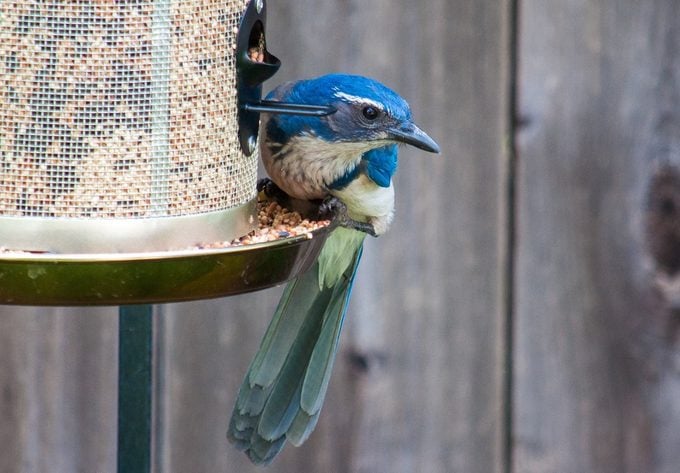
California Scrub-Jay
Two nearly look-alike types of jays, the California scrub-jay of coastal regions and Woodhouse's scrub-jay of the interior, are common across lower elevations of the West. These bold, crestless blue-and-gray jays frequent shrubby areas and backyards. Both make scolding cries and sing sweet, quiet, musical songs when with their mate, as most jay species do. A close relative, the island scrub-jay, lives only on California's Santa Cruz Island.
Like their cousins, they're omnivorous, meaning they eat both insects and plant material. They typically bury their favorite food, acorns, for later. To identify a California scrub-jay, look for a white throat and a gray back. They go off on their own to breed in isolated pairs instead of staying within a large flock as Florida scrub-jays do. Nests, built by both parents, are cup-shaped and made of twigs and moss.
Learn about 8 different kinds of bird nests and how to spot them.

Steller's Jay
The next time you hear a quick shek-shek-shek in the mountainous West, look up, and you might spot a Steller's jay. Common in evergreen forests, this type of jay typically sticks to exploring the higher canopies but will swoop into backyards to stop by feeders. It's the only all-dark jay with a crest, and it has small white or blue spots on its forehead. These birds travel in flocks except when nesting, and they eat loads of seeds, berries, and insects. They've been known to nibble on unattended picnic lunches, too!
Here's how to tell the difference between bluebirds vs blue jays.
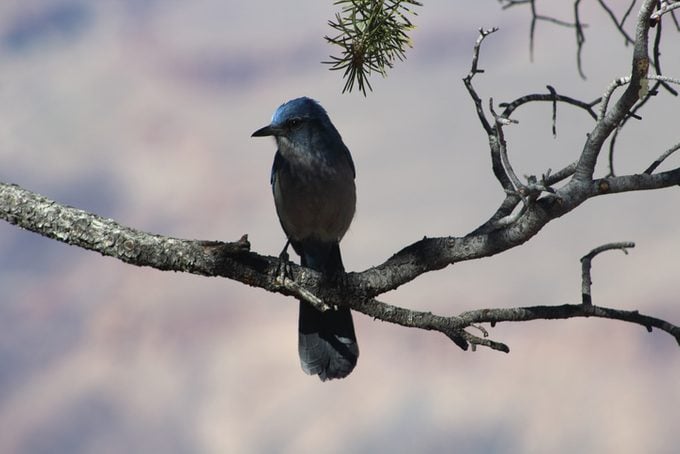
Pinyon Jay
This western species of jay is in dramatic decline—down by an estimated 85% since 1970. Much of its tree and shrubby habitat has been turned into grazing lands. These short-tailed jays roam in big flocks to find meaty pinyon pine nuts, uttering nasal caws to keep in touch. Look for them from Montana to Oregon, south to New Mexico and Arizona. P.S. No need to break the bank buying pine nuts: They'll eat the usual jay menu of sunflower seeds, peanuts, corn and suet.
Discover the 3 types of seeds and feeders birds love best.
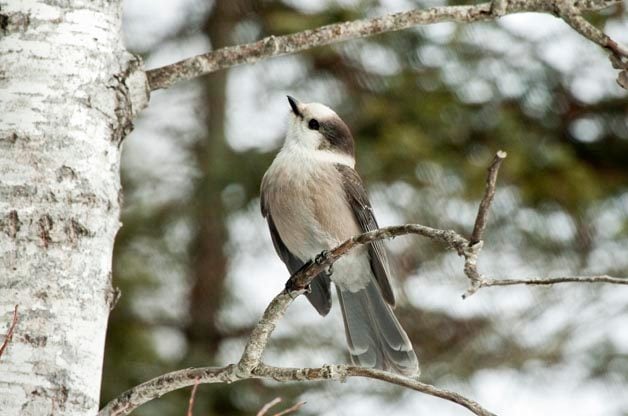
Canada Jay
Endearingly tame and undeniably cute, these types of jays, formerly known as gray jays, don't look or act like other jays! Fluffy gray and white, with a small bill suited to twisting off meat, Canada jays live in boreal, coniferous forests of the far North and high in the western mountains. So tame that they will eat right from a human hand, these jays are famed for approaching hikers, hunters and campers. Meat is what they want, or bread, suet and other soft foods, which they cache in bark or branches, not in the soil. Nuts and seeds at feeders are less appealing to them. These calm jays tend to be more silent than their kin. It's other nesting birds that sound the alarm when one comes near, because nestlings are just more meat to a Canada jay.
Check out 10 woodpecker species birders should know.
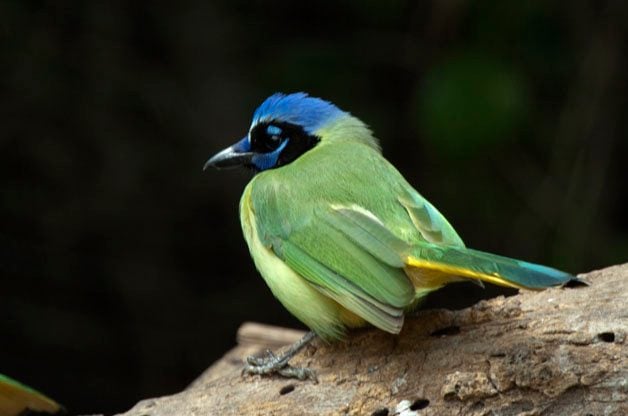
Green Jay
A highlight of the birding hotspot of Brownsville, Texas, this tropical jay is expanding its range, with sightings all the way to Laredo, Corpus Christi and even San Antonio, almost 300 miles north. Look for green jays at feeders at state parks and refuges, where they enjoy oranges and grape jelly, but also peanuts, sunflower seeds and corn. Water is a big attraction, too.
Discover the amazing Lower Rio Grande Valley birds.
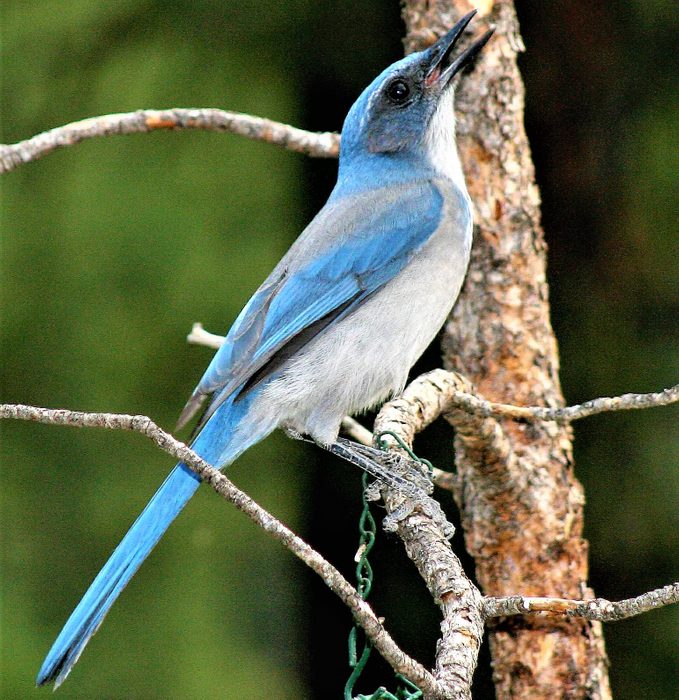
Mexican Jay
At first, all crestless blue-colored types of jays look similar. This species is known for its bicolor markings—blue above and gray below—and nasal wink calls. Found in the mountains of Arizona, New Mexico and Texas, Mexican jays stay in groups even at nesting time, when they share feeding duty for hungry nestlings.
Discover 8 types of orioles to look for in North America.
Florida Scrub-Jay
Housing development has been tough on this federally recognized endangered species as its homelands of scrub oak slowly disappear or are carved into ever smaller pieces. Acorns are Florida scrub-jays' main food—a single bird may cache 6,000 or more each year. Feeders stocked with peanuts help sustain these types of jays.
Next, learn about 15 types of hummingbirds found in the United States.
Source: https://www.birdsandblooms.com/birding/meet-jays-blue-jays-stellers-jays-western-scrub-jays/
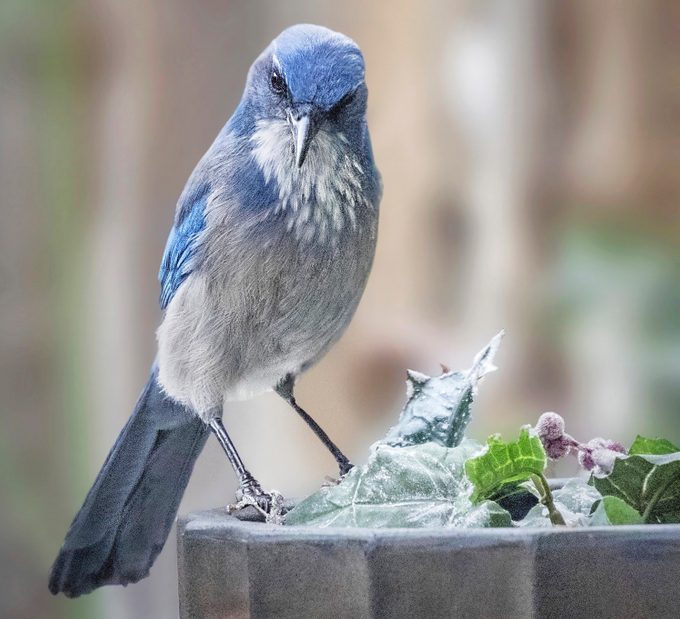
0 Response to "What Is the Categories of the Blue Jay"
Post a Comment